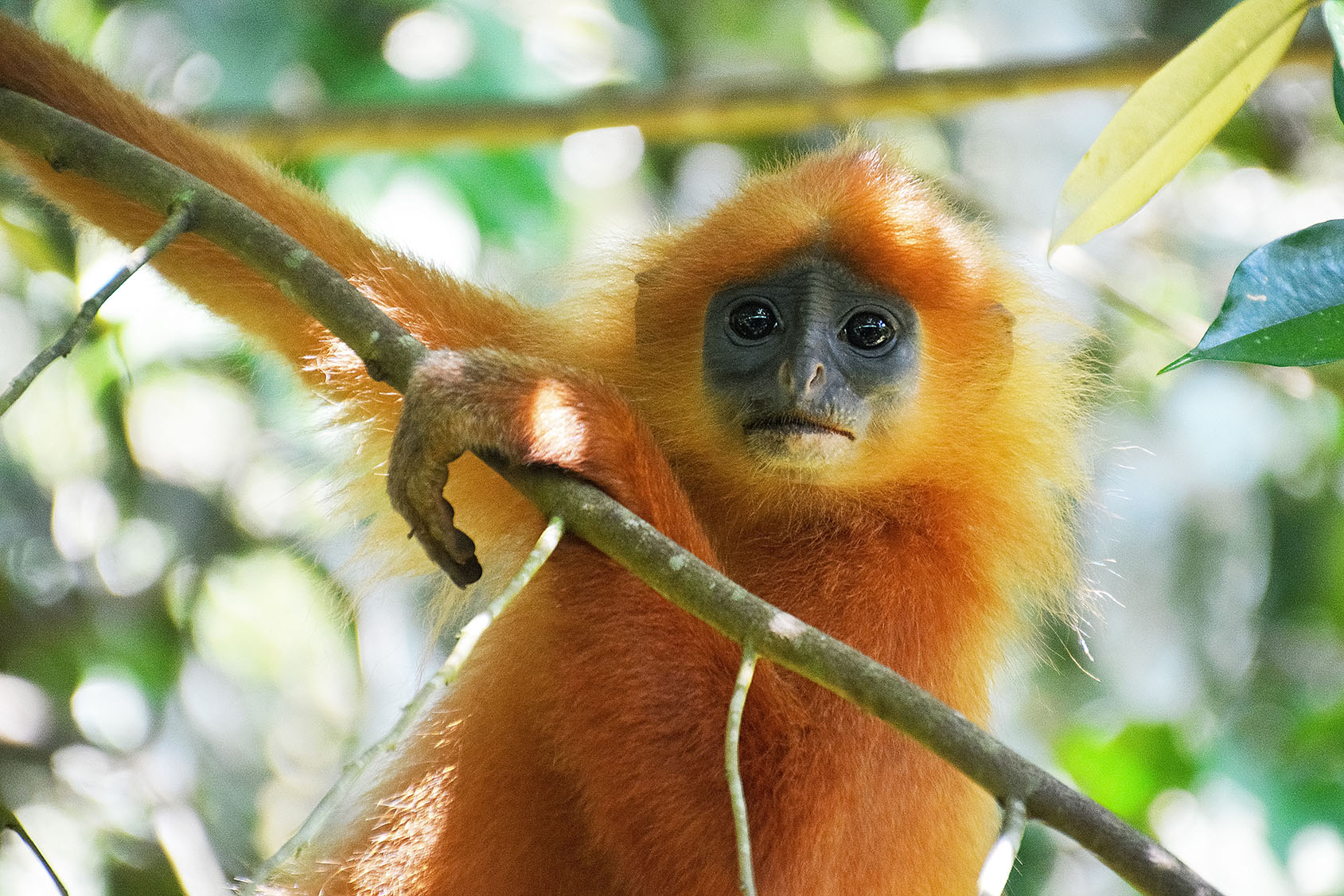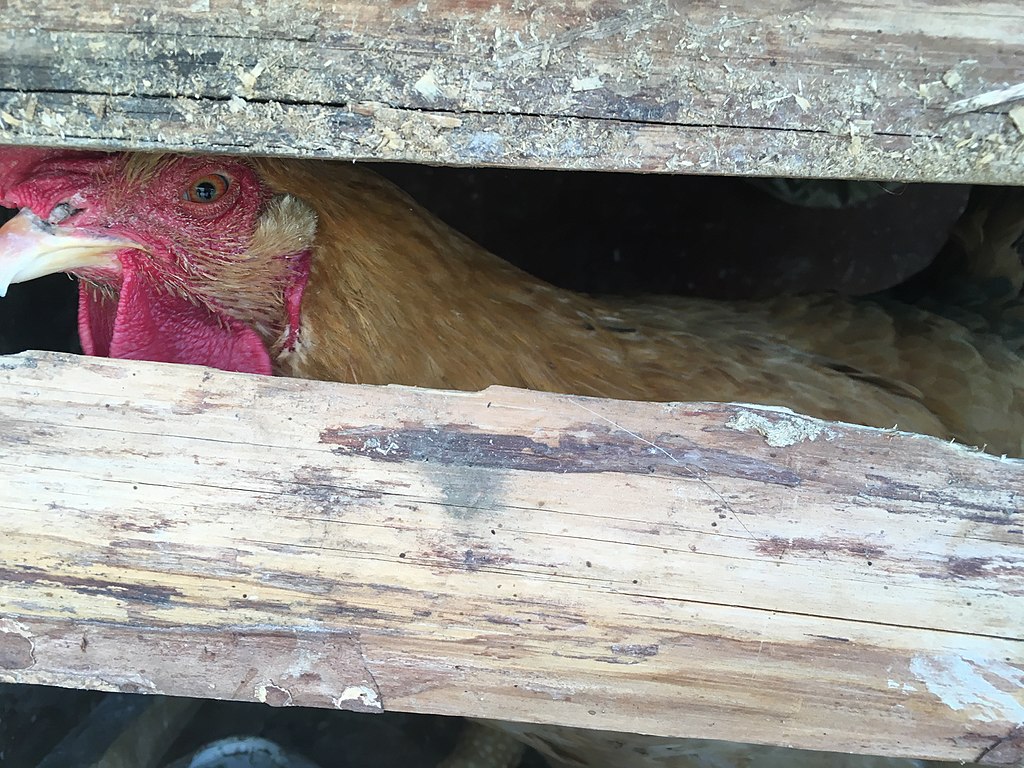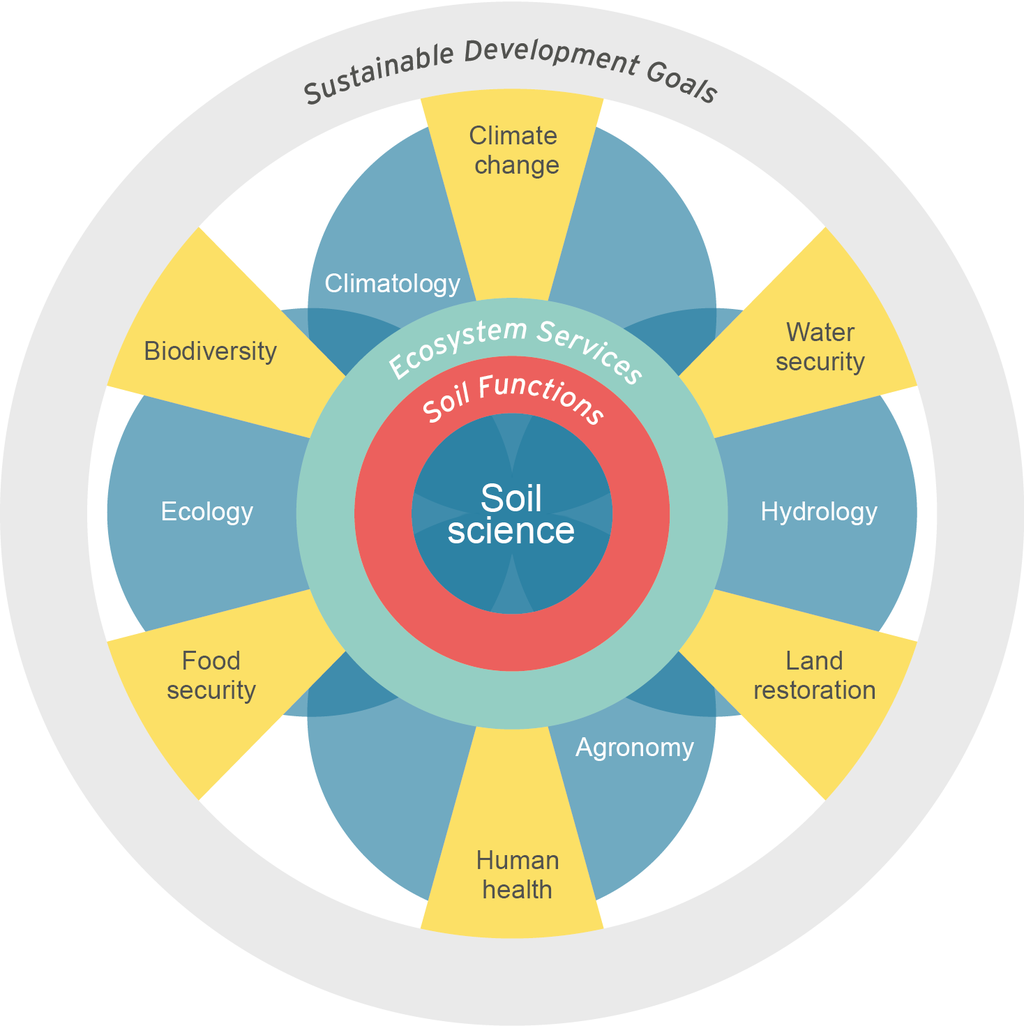People are starting to notice nature’s invoices: forest fires burning koalas, plastic in the oceans, but the loss of biodiversity freefall has not yet fully broken through onto the political agenda. The pandemic now highlights the connection between human health and the mismanagement of nature and wildlife.
The effect of environmental degradation on human health has long been recognized. From increases in asthma rates caused by air pollution to toxic contaminants in fish and habitat fragmentation driving the resurgence of Lyme disease, the relationship between human civilization and the natural world is at the root of many modern health risks. For decades, scientists have recognized the link between the origin of zoonosis (an animal disease that can be transmitted to humans) and the mismanagement of nature and wildlife.
‘Crises create opportunities,’ said UNESCO Director-General Audrey Azoulay at the United Nations Summit on Biodiversity in September 2020.
The opportunity to change how we see our relationships with nature, with each other, and with the Earth […] There is no future for business as usual. We need a “new normal” for biodiversity.

Children observing a Common Crow Pupa plant at the Visakhapatnam Biodiversity Park. Photo by Bmantha, CC BY-SA 4.0, via Wikimedia Commons.
Over 150 world leaders convened for the online summit to discuss ‘urgent action’ ahead of the 15th UN Biodiversity Conference of the Parties (COP15) due to be held in Kunming, China, in 2021. While biodiversity has not yet achieved the level of response that produced the Paris Agreement, species loss is increasingly recognized as a global challenge just as significant as, and highly related to, climate breakdown.
Rats and bats
It is now recognized that the Wuhan wet market was more likely an early ‘superspreader’ event rather than the origin of the virus. Nonetheless, the ‘pangolin narrative’ struck a chord with conservationists and brought increased media focus on the wildlife trade as a hotspot for pathogen transmission. However, according to zoologist Peter Daszak, president of the New York-based NGO EcoHealth Alliance, the wildlife trade is just one piece in a larger puzzle that involves hunting, livestock, land use, and ecology.

This red leaf monkey faces pressure from hunting and habitat loss in the Danum Valley rainforest of Borneo. Photo by Jeremy Zero on Unsplash.
Recent research published in the scientific journal Nature shows how biodiversity loss usually results in a few species replacing many. Those that tend to survive and thrive – rats and bats, for instance – are more likely to host potentially dangerous pathogens that can make the jump to humans.
Deforestation is a major factor in the increase of zoonotic disease transmission. According to a paper published in Science, tropical forest edges are major launch pads for novel human viruses. As road construction and forest clearance for timber production and agriculture extend the length of forest edges, increased interactions between wild animals, livestock, and humans elevate the risk of disease transmission. Tipping points can be identified here: contact between humans or livestock and wildlife is more likely when over 25 per cent of the original forest cover is lost.
Industrial meat production is perhaps the biggest part of the picture. IDDRI, a leading French sustainable development think tank, has identified the agri-food industry as a particularly powerful driver in biodiversity loss and the generation of zoonoses. In an interview, ecology and international affairs expert Aleksandar Rankovic explains:
Many emerging infectious diseases and pandemics over the last 50 years (especially the recent influenza pandemics) have come from domestic animals – poultry and pig farms. In others, domesticated animals have been at least one part of the chain transferring new viruses from wild species to humans.
The intensification of meat production and the consequent increase in animal concentration make livestock, as emphasised in Science, ‘critical reservoirs and links in emergent diseases.’ Bird flu was transmitted from wild birds to poultry to humans, while the swine flu made its way from wild birds to humans via pig stocks. Many livestock-linked outbreaks, such as the Nipah virus in South Asia, have reached the cusp of pandemic emergence in the 21st century.

This hen is looking angry for all the right reasons. Photo by Emily, CC BY 4.0, via Wikimedia Commons.
The connection between human health and biodiversity is twofold: first, deforestation and species decline increase the risk of zoonotic pandemics; second, human health threats such as pandemics and antibiotic resistance are driven by factors that intersect with the drivers of biodiversity loss.
Around the world, this link between health and biodiversity, as well as the environment more broadly, is increasingly politicized. Humberto Delgado Rosa is a director at the European Commission’s environment department. He stresses how the intense focus on the social and economic impacts of the pandemic extends to environmental protection.
It won’t mean putting biodiversity or environmental issues to one side. People are starting to notice nature’s invoices: forest fires burning koalas, loss of pollinators, plastic in the oceans – public support for nature protection is growing.
A priority at last?
Nature restoration has been on the agenda in Europe for 30 years. Ecologist Ben Delbaere began his career in the 1990s, ‘the era when biodiversity first got on the radar and into public policy.’ The Habitats Directive – one of Europe’s key nature protection laws – was adopted in 1992, followed by Europe’s adherence to the Convention on Biological Diversity in 1993.
At the turn of the century, the Millennium Ecosystem Assessment and other studies firmly linked the conservation of biodiversity and nature to sectors such as agriculture, forestry, and infrastructure development through the concept of ‘ecosystem services’ that recognized the many beneficial effects of healthy ecosystems on other areas of our lives.

Forest roommates in the Hainich National Park in Germany. Photo by Michael Fiegle, CC BY-SA 3.0, via Wikimedia Commons.
Nevertheless, Delbaere points out, when the economic crisis hit in 2008, ‘biodiversity fell down the agenda’, with jobs and economic recovery coming to the forefront. More recently, political attention on nature and biodiversity has returned, buoyed by the climate agenda and the European Green Deal.
‘2020 is a key year for the EU’s biodiversity policy,’ explains Delbaere. Released in October, the European Environment Agency’s six-yearly report State of nature in the EU found that biodiversity in Europe faces
deteriorating trends from changes in land and sea use, overexploitation and unsustainable management practices
and that EU targets for 2020 had been missed. A new strategy for the years up to 2030 was announced in May.
Delbaere leads a team examining the extent to which European funding for nature conservation (via the LIFE programme, Europe’s key funding instrument for the environment) has contributed to an improved conservation status for the species and habitats protected by European law. Delbaere’s team found that conservation efforts have been successful throughout all habitat groups and all species types – but mostly at local and regional levels:
The investment is paying off, but the projects are still too localized to have a large impact.
The actions carried out under the LIFE programme only managed to slow biodiversity loss rather than halt or reverse it.

The Northern Bald Ibis, Hermit Ibis, or Waldrapp is a critically endangered species which has lost its migratory behaviour. The LIFE Programme supported a project in which these birds are being re-taught their original migration path. Photo by Richard Bartz, Munich aka Makro Freak, CC BY-SA 2.5, via Wikimedia Commons.
Delgado Rosa echoes this point:
Action by the EU was not of sufficient breadth nor sufficiently integrated with the sectors that underly the drivers of biodiversity loss to counter it.
However, he indicates that these shortcomings are gradually being overcome. Part of the EU’s Green Deal, the new biodiversity strategy for 2030 aims to expand legally protected areas in Europe to at least 30 per cent of land and 30 per cent of sea (with at least 10 per cent of these areas under strict protection) and create ecological corridors as part of a trans-European nature network.
Legally binding targets for nature restoration are expected in 2021, and 20 billion euros per year for biodiversity will be sourced through EU funds as well as national and private sources.
Delgado Rosa is upbeat about the prospect of Europe taking a leading role in the global biodiversity talks at the COP15 in 2021:
‘European leadership is happening de facto. Europe’s biodiversity strategy for 2030 is the most ambitious the world has ever seen.’
But while biodiversity policy might be gaining political weight, truly integrating nature, human health, and the economy remains a challenge.
At one with nature
To stop the biodiversity free fall, the secretariat of the Convention on Biological Diversity, a global treaty signed in 1993, argues that much of human activity needs to be dramatically transformed. Its eight transition areas include food systems, climate action, fisheries, and forests, as well as ‘One Health’, an integrated approach to human health and environmental management.

Infographic by Saskia D. Keesstra, Johan Bouma, Jakob Wallinga, Pablo Tittonell, Pete Smith, Artemi Cerdà, Luca Montanarella, John N. Quinton, Yakov Pachepsky, Wim H. van der Putten, Richard D. Bardgett, Simon Moolenaar, Gerben Mol, Boris Jansen, Louise O. Fresco, CC BY 3.0, via Wikimedia Commons.
Political-economic systems and international institutions across the world have so far failed to adequately integrate human, animal, and environmental health in order to contain the spillover and spread of infectious diseases. Research by IDDRI stresses how the pandemic has revealed the
current difficulties of the institutional, health and economic systems in learning the lessons of repeated infectious emergencies, in terms of preventative actions, global surveillance and strengthening resilience.
According to their report, the only approach that ‘brings together international agencies with a certain capacity for intervention’ is One Health. Officially adopted by international organisations and scholarly bodies in 1984, the One Health approach aims to address global health challenges through coordinated action on human, animal, and environmental health.
In 2018, the Food and Agriculture Organization of the United Nations (FAO), the World Health Organization (WHO) and the World Organisation for Animal Health (OIE) agreed to use the One Health approach to tackle antimicrobial resistance.
However, this has remained a ‘principle of collaboration between specialised agencies’, lacking action, funding, or specific standards. Thus, although the approach may be the most developed framework of its kind, its principles have not yet become practice.
Rankovic considers that the link between the environment and health poses a ‘deep problem’ for international institutions. Looking at One Health, he points out how the UN Environment Programme (UNEP) is not involved, leaving the environment sidelined.
A WHO enquiry is underway to explore the emergence and management of the Covid-19 crisis but, again, adds Rankovic, ‘UNEP is marginalized in this enquiry.’ Only when the environmental component is on the same level as food and health in how health risks are framed will approaches such as One Health correspond to what is at stake, he concludes.
Rethinking food production
Intensive agriculture is widely recognised as the single biggest driver of biodiversity loss. Transforming the agri-food system is therefore critical, if not sufficient, to bend the curve of species loss and ensure a healthier environment. However, as seen with One Health, moving from recognizing this connection to effecting real changes in how humans produce food from nature is not straightforward.
Europe remains committed to a largely unreformed common agricultural policy (CAP) which accounts for around one third of the EU budget. For decades, the CAP has been criticized for its perverse incentives and poor environmental impact.

Bugal Shrestha working on his vegetable farm in Thade, Nepal. Photo by the Asian Development Bank via the University of Bergen.
A key element of the Green Deal, the EU’s Farm to Fork strategy sets targets to transform the European food system, including
- a 50 per cent reduction in the use and risk of pesticides,
- a reduction of at least 20 per cent in fertilizer use,
- a 50 per cent reduction in sales of antimicrobials used for farmed animals and aquaculture,
- and reaching 25 per cent of agricultural land under organic farming.
But much depends on how member states choose to implement the common agricultural policy at the national level. Europe appears unlikely to break the link between food production and species loss in the near future.
Rankovic argues that a radical rethink of agricultural policy is required.
The message is clear. The best thing we could do for biodiversity would be to push for a deep transformation of our food systems.
The challenges are numerous, says Rankovic.
If it was only a case of changing the culture, the task would be much easier. Many livelihoods depend on jobs in the agri-food industries.
Time for global biodiversity governance
The European Union would like to position itself as a global leader in biodiversity protection. China, the host country of the 2021 COP15, is also putting forward ambitious plans. ‘Our solutions are in nature,’ said President Xi Jinping in his opening address to the UN summit. As the host of the summit, China is underlining its role in environmental governance.
Undoubtedly, new strategies for biodiversity governance are required: over the past decade, none of the global biodiversity targets have been met, nor those set at the European level. In October 2020, Hans Bruyninckx, director of the European Environment Agency, referred to climate change and biodiversity loss as inseparable issues:
The scientific understanding is clear: if we want strong climate solutions based on nature, then we need to have strong nature.
While net-zero emissions will require making the most of the natural carbon cycle, the politics of climate and biodiversity have long been distinct agendas. As Bruyninckx notes, ‘these are often two separate worlds.’
In contrast to climate governance, international biodiversity governance has so far failed to generate sufficient political will and societal urgency around the severe risks associated with global biodiversity loss.
Now that the pandemic has brought home the consequences of those risks, could global biodiversity governance see a ‘Paris moment’ of international consensus and commitment to nature restoration, with nature valued not as an aesthetic but rather as the foundation of human health and effective climate action?
At the UN summit, President Xi called on global leaders to ‘uphold multilateralism and build synergy for global governance on the environment,’ stating that ‘cooperation is the right way forward.’ But national interests have risen to the fore in the response to Covid-19 and acts of international solidarity are lacking.
Whether the mounting evidence – and repercussions for human health – of biodiversity freefall will be sufficient motivation for the international community to cooperate rather than compete, remains an open question.
This article was originally published in the Winter 2020 issue of the Green European Journal.
Published 7 January 2021
Original in English
First published by Green European Journal Winter 2020
Contributed by Green European Journal © Clare Taylor / Green European Journal / Eurozine
PDF/PRINTIn collaboration with
In focal points
Newsletter
Subscribe to know what’s worth thinking about.
Related Articles

Philosophy and the bomb
Blätter für deutsche und internationale Politik 8/2025
Karl Jaspers, Günther Anders and the nuclear dichotomy; how Israel’s allies have abandoned the Iranian opposition; and EU asylum policy ten years on from ‘Wir schaffen das’.

The decisive sex-change moment in movies, revealing a dramatic transformation, is far from reality. Transgender people face not only long assessment and surgery waiting lists but also bureaucratic hurdles when reassigning legal gender across countries, undermining their well-being and safety at a delicate time of becoming themselves.







